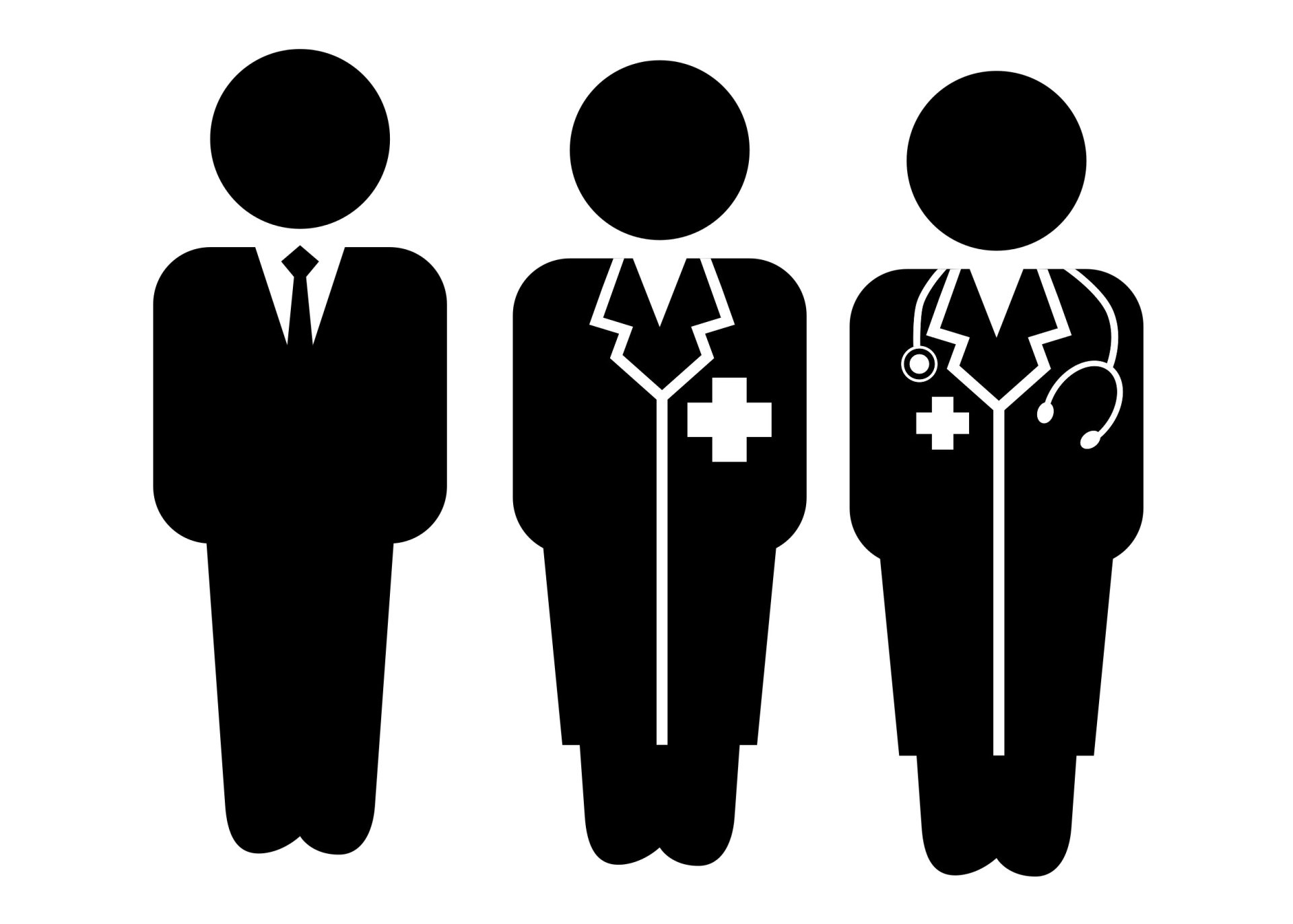The Expanding Role of Pharmacists: A Positive Shift for Health Care
- By Ashley Chiara, PharmD • 26 Mar, 2019
- •
- 10 Jan, 2020

When reflecting upon the impactful members of a patient’s healthcare team, much consideration is given to the patient’s nurses, primary care physician and specialists. However, with nearly nine in 10 Americans living within five miles of a community pharmacy, and four in five receiving prescription benefits through a pharmacy benefit manager (PBM), the role of the pharmacist in orchestrating a patient’s care on the front lines is often overlooked.
A recent New York Times article by Aaron Carroll highlights the frequently unrecognized role of pharmacists as critical members of the ever-changing healthcare system, and how pharmacists are uniquely positioned to oversee medications, both individually and in combinations, from the numerous prescribers one patient may have. Having the ability to coordinate the complete medication regimen of a patient allows the pharmacist the opportunity to suggest methods for accurately and effectively taking prescribed medications, discuss medication safety, identify and manage side effects, and assist in managing chronic health conditions.
Many patients in the community are unaware that pharmacists have been extensively trained to provide basic healthcare services such as providing blood pressure screenings, educating patients with diabetes on the effective use of glucometers, and ultimately providing an interpretation of these readings and diagnostic tools. Pharmacists can also be a quick-to-reach resource for recommending over-the-counter remedies for common ailments, without the cost and time of getting to a doctor’s office.
On a regular basis, pharmacists in the community, hospital, ambulatory, and managed care settings offer outreach or Mediation Therapy Management (MTM) services to prescribers and patients. If a pharmacist receives a prescription from a prescriber that appears to be unsafe to use with a patient’s other medications, if the dose or duration is inappropriate, or if the cost is overly burdensome, they have the ability to recommend appropriate alternatives by reaching out to the prescriber.
With 66% of adults taking five or more drugs per day and 27% taking 10 or more per day, a pharmacist’s review is critical in identifying when prescriber outreach and consultation should be performed for the safety and well-being of the patient. Due to disjointed healthcare systems, many prescribers are unaware of medications a patient may be taking that have been prescribed by another member of the patient’s healthcare team.
Some studies have shown that pharmacist intervention was successful in deprescribing “risky” medications in 43% of enrolled patients within six months, compared to 12% of patients where a pharmacist did not intervene.
In the managed care setting, pharmacists play a “behind-the-scenes” role in helping manage a patient’s medication regimen. Managed care pharmacists can provide a link between prescribers and patients through MTM services by engaging with patients in discussions regarding proper use of medications, the importance of medication adherence, and identification of high-risk medications. Pharmacists can also provide outreach to patients who are currently utilizing costly medications to provide appropriate alternatives, such as interchangeable generics or a comparable drug within the same class, or advise on elimination of redundant drug therapy.
The provision of MTM services can also assist in identifying gaps in care or dangerous drug combinations that may lead to disease exacerbations, additional medications or costs associated with nonadherence and side effects, or hospitalizations due to suboptimal care.
Aside from patient-specific interventions, managed care pharmacists also play an essential role in promoting cost-effective and clinically-sound drug therapy through the practice of formulary management, routinely utilized by health plans, PBMs, hospitals, and accountable care organizations. In the current landscape of rapidly increasing drug prices, the clinical expertise of pharmacists can assist in mitigating the costs incurred by payors due to growing utilization, innovations in drug therapy (e.g., cell and gene therapy), and lack of manufacturer competition in drug classes for rare disease states. Managed care pharmacists have the ability to assess and compare clinical consensus guidelines and drug-therapy recommendations, review data from clinical trials, and evaluate economic impact to develop appropriate treatment algorithms and frequently used formulary management tools, such as step therapy and prior authorization requirements. With the Food and Drug Administration (FDA) approving record numbers of new drug entities in recent years, the role of the pharmacist in reviewing new and complex drug technologies is critical in ensuring patients are receiving appropriate, cost-effective therapy on both the spectrum of individual and public health.
The role of the pharmacist in public health has been transforming and expanding in recent years. For example, in many states, including Massachusetts, pharmacists can become certified to provide injections such vaccinations and long-acting antipsychotics without the appointment and trip to the doctor’s office. In 2012, the number of vaccines administered by pharmacists was expanded from just the flu shot, to include a total of 10 adult vaccines for prevention of illnesses such as shingles, hepatitis A and B, meningitis, and more. In many cases, vaccines are available through prescription insurance without a copay or the cost of an office visit. In many states, pharmacists have the authority to recommend and prescribe routine medications such as smoking cessation agents and oral contraceptives, as well as interpret common diagnostic tools such as for influenza and strep throat. The trend continues to expand in many other states as the need for accessible and affordable healthcare continues to grow and an untapped resource of providers is being recognized.
Aside from the ability to independently prescribe basic medications in a community pharmacy setting, for many years pharmacists have been able to work in tandem with physicians through what’s known as collaborative practice agreements (CPAs), where pharmacists are involved in the provision of expanded direct patient care through comprehensive disease management. Examples of pharmacist responsibilities in these settings include performing patient assessment activities, ordering and interpreting laboratory tests, developing therapeutic plans, and ultimately utilizing prescriptive authorities to initiate, adjust, or discontinue drug treatment.
As of 2011, CPAs between physicians and pharmacists were authorized by 44 state pharmacy boards, including Massachusetts. In a 2008 survey of prescribers who had worked collaboratively with pharmacists through these types of agreements, 96% of physicians who responded reported numerous benefits, including improved disease management outcomes and the allowance of the physician to shift their workload to more critical patients. Arrangements such as CPA’s take the pharmacist-prescriber consultative structure to a level of a healthcare partnership which integrates pharmacists as primary care providers, rather than responders to a predetermined decision.
As the healthcare industry shifts from a reimbursement structure based on volume towards a reimbursement structure based on value, the unsung role of the pharmacist as an integral healthcare team member will come to realization. As practitioners trained to assess the whole-patient picture, pharmacists connect the dots between prescribers and impact the clinical and economic effects of drug therapy in an ever-changing healthcare system. Professional medical and pharmacy organizations remain instrumental in advocating for the underutilized resource of pharmacists in any healthcare setting.


Researchers at the UNC Eshelman School of Pharmacy looked at what happens when pharmacists are tasked with conducting annual Medicare wellness visits in a medical practice. During the patients’ first visit, the pharmacists spotted at least one medication-related problem in more in than 90 percent of patients, the majority of which were able to be resolved by the pharmacist. During six- and twelve-month follow-up visits, they uncovered medication issues for all patients.
“Pharmacists performing annual wellness visits have a prime opportunity to provide comprehensive medication management, a much-needed service for older adults,” said Tasha Woodall, Pharm.D., lead author of the study and an assistant professor of clinical education at the School. “For every patient the pharmacist saw, there was something that could be done to make their medications work better for them.”
CMM ensures each patient’s medications are individually assessed to determine that each one is appropriate for the patient, effective for the medical condition, safe given the patient’s other conditions and medications and able to be taken by the patient as intended.
Wellness visits were created in 2011 as part of the Affordable Care Act. Medicare Part B covers an annual visit to the doctor for the purpose of developing or updating a personalized plan to prevent disease and disability. Pharmacists can conduct these visits under a physician’s supervision and be reimbursed by Medicare at the same rate. The visit includes activities such as administering a health survey, conducting a complete medication review and taking measurements of weight, blood pressure, and cognitive function.
The reimbursement received from Medicare for these visits exceeded the cost of delivering the care by more than 38 percent, the researchers found. Pharmacists lack what is known as “provider status” with Medicare and are not usually able to be reimbursed for services provided directly to patients. However, the annual wellness visit presents a special opportunity to improve pharmacists’ revenue generating potential.
“Having pharmacists conduct annual wellness visits is a win-win for patients and the medical practice,” said Suzanne Landis, M.D., M.P.H., a co-author of the paper and a recently retired MAHEC physician. “It results in a positive return on investment for primary-care practices and frees up physicians to focus on patients’ chronic and acute illnesses.”
Fifty-three patients at Mountain AHEC participated in the study. Their average age was 82, and each had three or more chronic medical conditions and were taking from three to 27 medications with 12 being the median number of meds taken. Thirty-nine were women. The pharmacists saw the participants in March, April and May of 2013. The study was published in the American Journal of Health-System Pharmacy.
Researchers found a total of 278 medication-related problems among the study participants. For nearly 33 percent of patients, the drug they were on was not the right one for their condition. More than 25 percent of patients weren’t being monitored as required for the medication they were taking. Nearly 17 percent weren’t receiving enough treatment for their condition, and almost 16 percent weren’t getting the right amount of medicine or not getting it at the right time.
In a 2014 study, UNC researchers examined the feasibility of using wellness visits as a way for physicians to pay for adding a pharmacist to a medical practice. They calculated that 1,070 wellness visits a year—or approximately six visits per day — are needed to cover a $120,000 pharmacist’s salary and would require about 40 percent of a pharmacist’s time to complete. The approach works best in larger medical practices, they found, which are more likely to have the needed volume of patients.
MAHEC started a pilot program in 2012 where a pharmacist took over the wellness visits for three physicians. Patients received information about the scope and purpose of the visits before coming in, which helped keep the visits focused and on schedule. Today, all wellness visits at MAHEC are conducted by pharmacists.

Physicians seeking a way to pay for the expertise of a pharmacist in their medical practices could look to Medicare annual wellness visits to help cover the cost, according to a study from the UNC Eshelman School of Pharmacy.
Medicare Part B covers an annual visit to the doctor for the purpose of developing or updating a personalized plan to prevent disease and disability. Pharmacists can conduct these visits under a physician’s supervision and be reimbursed at the same rate. The visit includes activities such as administering a health survey, conducting a complete medication review, and taking measurements of weight, blood pressure, and cognitive function.
Bigger is Better
It takes 1,070 wellness visits a year—or approximately six visits per day—to cover a $120,000 pharmacist’s salary, the study’s authors calculated. Their findings were published in the Journal of the American Pharmacists Association.
For a large medical practice (fifteen physicians), at least 18 percent of its eligible patients must complete an annual wellness visit with a pharmacist to reach $120,000 in reimbursements.
A medium-sized practice (five physicians) needs at least 54 percent of its patients to come in.
A small medical practice with two physicians would not have enough patients to afford a pharmacist funded by wellness visits alone.
UNC Eshelman School of Pharmacy and UNC School of Medicine faculty based in Asheville, North Carolina, conducted the study. They assumed that each practice has 2,000 patients per physician with 20 percent on Medicare. The hypothetical pharmacist in the study is available to see patients nearly thirty-eight weeks a year. The study also accounts for the fact that a patient’s first wellness visit is reimbursed at a higher rate than subsequent visits.
Here’s the Catch
Only 11 percent of eligible patients nationally actually use their wellness visit benefit, according to a 2013 report from the U.S. Department of Health and Human Services. That’s up from 9 percent in 2012. The wellness visits were created in 2011 as part of the Affordable Care Act.
The study authors practice at the Mountain Area Health Education Center clinic in Asheville. MAHEC would be a large practice in the study based on the number of patients seen. Physicians there started conducting wellness visits in 2011 and found them difficult to complete in the fifteen minutes allotted.
MAHEC started a pilot program in 2012 where a pharmacist took over the wellness visits for three physicians. Patients received information about the scope and purpose of the visits before coming in, which helped keep the visits focused and on schedule, says Courtenay Wilson, PharmD, senior author of the study and a MAHEC pharmacist.
“I can listen to their concerns and make sure that patients know that I’m hearing their concerns,” Wilson says. “I then schedule a follow-up visit with a physician who will know all of the issues that we have identified and have up-to-date records for the patient. It’s a nice partnership.”
By January 2013, all wellness visits at MAHEC were automatically scheduled with a pharmacist.
“From the doc’s perspective, the wellness visit takes a fair amount of time,” says Lisa Ray, MD, another author of the study and a MAHEC physician. “Handing it over to someone who is extremely competent frees us up to see other patients in those time slots. The added bonus is that every one of our Medicare patients has a pharmacist looking over their medication list.




